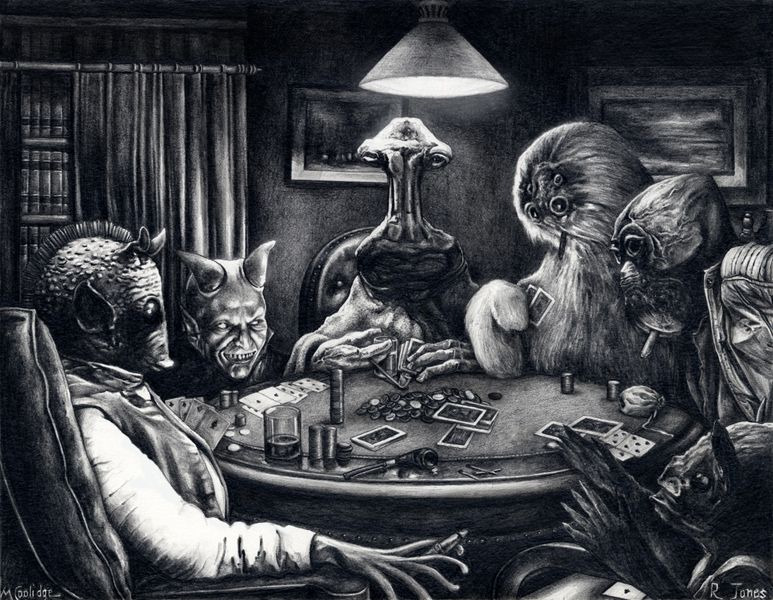What Is Bluffing?
Bluffing is essentially a deliberate exaggeration or embellishment, designed to take advantage of the other party’s gullibility and create a favorable impression. Of course, it can also be interpreted more harshly, as an act that misleads others about the true circumstances. Yet, bluffers are often so skillful that they inspire admiration, whether or not they are eventually exposed.
Most people bluff to some extent. The real question is how convincing the bluff is and how carefully it’s crafted. Sometimes, a subtle hint works better than a direct assurance.
The beauty of bluffing is that it’s not outright lying. It’s simply an exaggeration of reality. You turn a black-and-white photo into a color one, a color photo into a painting, and an ordinary painting into a work of art.
Bluffing can involve one’s family background, connections, personal achievements, or even romantic conquests.
Bluffing in Different Professions
Researchers have even tried to develop a scale of acceptable levels of bluffing for politicians, journalists, lawyers, doctors, athletes, businesspeople, and other professionals where results matter. Too little or too much bluffing leads to failure.
In both personal life and business, bluffing is often essential. After all, everyone wants to deal with worthy and reliable partners.
Common Bluffing Techniques
What methods and tricks do master bluffers use? The simplest ones!
Image plays the leading role in the orchestra of bluffing. As the saying goes, “Clothes make the man.” Elegant clothing, expensive watches, trendy accessories, and cosmetics always make an impression. In general, a stylish appearance helps you make the most of your strengths.
But not everyone can afford haute couture. And you can’t afford to look bad—after all, you didn’t find yourself in a dumpster! The only way out is to put on a show. Everyday tricks come into play. The first thing to change is the so-called “labels” on clothing. Of course, if a woman puts a Dior, Chanel, or Versace tag on a suit from a local factory, at best she’ll be seen as eccentric. Gossip spreads fast, and her reputation could be ruined forever. That’s why experienced people never mix obvious fakes and even in conversation mention designers who are well-known but not the most famous. The boutiques they claim to shop at have names like Georges Rech, not Valentino or Sonia Rykiel. This highlights their refined taste and discernment. But, of course, such a person would never buy for $1 what can be bought for $30.
Often, instead of gold jewelry, people wear gold-plated or even costume jewelry with fake stones, but present it as family heirlooms so convincingly that no one suspects a thing. Experts might recognize Givenchy accessories, but who can tell with “family treasures”?
Other props that support the image include a cell phone (which might not even be connected), a noticeable watch from a famous brand like Longines or Cartier (but actually a cheap electronic one), and other attributes of a modern businessperson.
Beyond Image: The Performance of Bluffing
Image is just the beginning. The bluff must be maintained through the performance.
An effective trick is to act with convincing significance or simply remain silent. A skilled bluffer, for example, will never say “I live in Vyhino” (a less prestigious area of Moscow) to avoid shattering the impression that they live in the city center.
Another technique is “the entourage makes the king.” In casual conversation, influential people are mentioned as good acquaintances, emphasizing the importance of one’s social circle. Usually, this information can’t be verified, which is the whole point. The calculation is that people will believe the old saying: “Tell me who your friends are, and I’ll tell you who you are.” People tend to associate such a person with the powerful. Good connections are often valued more than money—they’re the golden key to solving many problems.
Constructive Bluffing
Surprisingly, bluffing can be constructive. Exaggerating achievements can actually motivate the bluffer to reach those goals. It’s important not to go too far, since the information can be checked, and the listener may be more informed than expected.
Some types of bluffing are constructive because they allow the bluffer to achieve goals through a “credit of trust.” For example, prestigious clothes, a car, or a home—behind flashy facades there may be real poverty, but these appearances allow the person to remain in a social circle where they might be offered a job that helps them maintain and eventually achieve that image. Social mimicry enables the principle of “money attracts money,” even if the “money” is just a prop.
The Art of Bluffing
Acting skills are crucial in bluffing. This can include “nervousness,” a trembling voice, or “agonizing” anxiety about a deal. But true bluffing is about staying calm and projecting confidence. As one card shark said: “If you say you have $50,000 but only have $10,000 in your pocket, say it without changing your voice or pace, don’t make unnecessary gestures, look your partner in the eye, don’t light a cigarette at that moment, hold the pause, and people will believe you.”
Bluffing is about creating a legend, a dream. That’s why the most common bluffs among businesspeople revolve around themselves—their biography, family background, business and personal successes, connections, and future plans. Bluffing is egocentric, which makes it more convincing, as it allows the bluffer to fully inhabit the role.
Main Principles of Bluffing
- Bluffing always has a real basis.
- A convincing logical or emotional manner of presentation.
- Exaggeration is combined with real facts.
- Low probability that the unreal facts can be checked.
- An abundance of details (creating an illusion of credibility and competence).
- Limited or no competence among listeners.
- Confidential significance (“I can’t tell you everything, you understand!”).
Bluffing is like a beautiful, frivolous woman who doubts whether she loves you, but wants so much to deceive herself and believe what she’s telling you!



